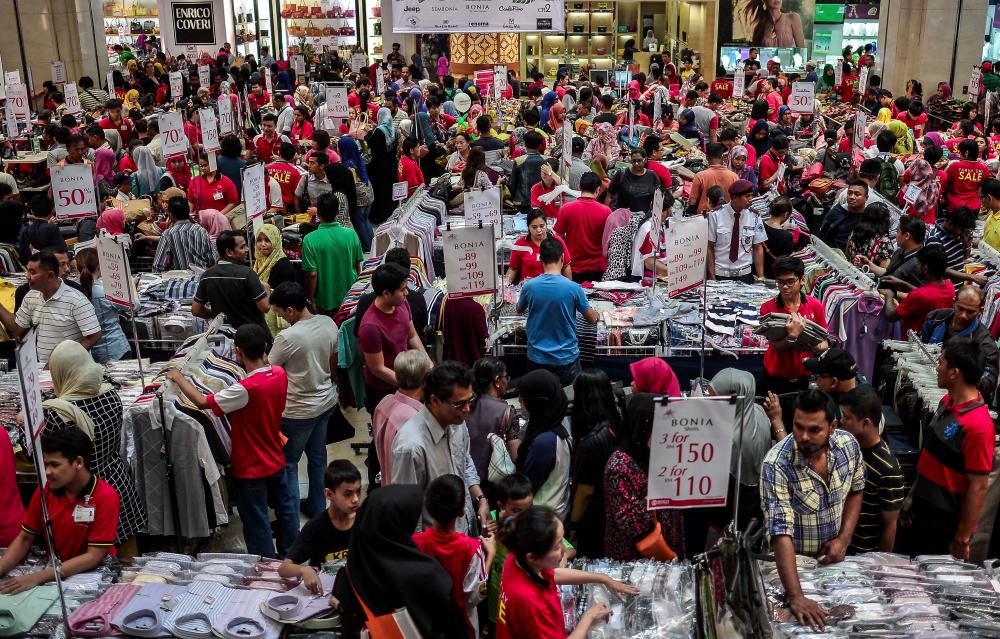PETALING JAYA: Faced with tight finances due to educational expenses as schools reopen, household budgets have been stretched to the limit, causing Hari Raya shopping to take a back seat for most families with young children.
Halizah Mohd Ariff, 46, said she only shopped for her three children aged 17, 14 and 12.
“It’s tough this Hari Raya. Expenses for school uniforms, exercise books and stationery have come together with the school reopening.
“My husband, who is a manager at a private company, and I decided to make do with some of the newer clothing we bought earlier this year. So, no shopping for us,” said the homemaker.
Taxi driver Mohd Yusry Bukhary, 51, also said he reduced his Hari Raya shopping this year.
“My wife works as a clerk in a law firm, so we can manage with our joint income. But even then, we only bought essentials such as clothing for our five children and some new curtains, which we purchased online.
“School expenses hit us hard so we have little choice but to cut down on our Hari Raya spending.”
Both Halizah and Mohd Yusry said unlike civil servants and retirees, who will receive RM500 and RM250 respectively as special financial assistance in conjunction with Hari Raya, senior citizens, the physically disabled and others received nothing to assist them at this time, so expenses have to be cut.
Monash University economics professor Dr Niaz Asadullah said the reopening of schools has impacted consumer spending on Hari Raya preparations due to competing financial demands.
“Many families have to prioritise one expenditure over another, making difficult choices about where to allocate their limited funds.
“This includes the needs of school-going children such as purchasing uniforms and books, as well as balik kampung expenses on top of essentials for Hari Raya.”
Niaz said the cautious stance taken by many families can be traced to the aftermath of the Covid-19 pandemic, which caused significant shifts in household spending patterns.
ALSO READ: Malaysia’s headline inflation to moderate to 2.5 pct in 2024 - World Bank
He said post-Covid-19, most households continue to be in financial distress with a considerable portion of family income still allocated for debt repayment, and servicing mortgages and vehicle loans.
“The current financial difficulties have potential implications for the economy, especially small and medium-sized enterprises, and vendors who rely on B40 customers to spend during religious and cultural festivals.
“But their cautious spending will translate to decreased sales, adversely affecting financial performance and long-term business sustainability.”
Niaz said in many Asian cultures, festive spending amounts to a sizable part of a household’s annual expenditure, which is also consistent with economic theory in normal circumstances.
He said employees often receive bonuses, salary increments or gifts during festive periods, which means households will spend more.
“Festive spending is driven by the need to preserve their social status in the community. This is also reinforced by peer influence that impacts consumer behaviour during festive seasons.
“For example, any inability to give duit raya or host elaborate celebrations may cause social exclusion, which is why we see higher consumer spending regardless of an individual’s financial position,” he said.
Niaz added that the trend of cautious consumer spending even amid the fast-approaching Hari Raya celebration may also have macroeconomic factors contributing to it.
He said while official data indicates otherwise, concerns about inflation persist among the public, with some B40 families viewing the purchase of new baju raya as no longer feasible or necessary, given the current economic conditions.
“Additionally, the Central Database Hub has also caused uncertainty regarding the implementation of targeted subsidies that may lead households to not spend on non-essential items.”
He said consumers may delay their purchases until after Hari Raya to take advantage of lower prices.
“This is part of their cautious approach to spending during a period of economic uncertainty.”









